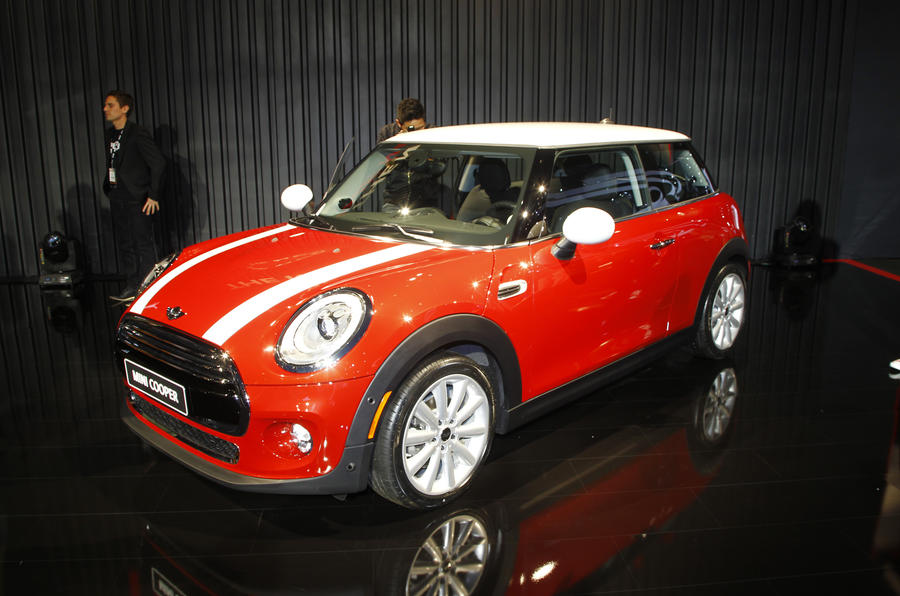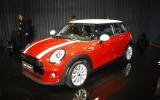BMW has taken the wraps off the third generation of Mini developed under its ownership. It has made its first public appearance at the Tokyo motor show today, before appearing at the LA motor show.
The new F56-generation three-door hatchback has evolutionary styling, increased dimensions, a host of new technology and, most important, a new platform and a range of new three-cylinder engines that will also be used in BMW models.
The new Mini was unveiled on Monday at the firm’s Oxford factory today before its motor show appearances. It will go on sale in the UK next spring, with the initial range of Cooper, Cooper D and Cooper S models priced from £15,300.
Mini calls the new model “completely new from the ground up”, the result of which is “a Mini that is distinctly familiar but enhanced in every single way”.
The new Mini is 3821mm long, 1727mm wide and 1414mm high. That’s 98mm longer, 44mm wider and 7mm taller than its predecessor. The wheelbase is up by 42mm to 2495mm and track widths increase by 42mm at the front and 34mm at the rear. The result of these increased dimensions is improved cabin space. Boot space is also up 30 per cent to 211 litres.
The all-new engine line-up at launch features a 1.5-litre three-cylinder petrol unit in the Cooper, a 1.5-litre three-cylinder diesel in the Cooper D and a 2.0-litre four-cylinder petrol in the Cooper S.
Each engine is turbocharged, has a stop-start system, complies with Euro 6 emissions regulations, offers peak power and torque lower in the rev range than its predecessor and is up to 27 per cent more fuel efficient than the engine that it replaces.
The £15,300 Cooper has outputs of 134bhp and 162lb ft. Its combined economy is 62.8mpg and CO2 emissions are 105g/km. The £16,450 Cooper D’s figures are 114bhp, 199lb ft, 80.7mpg and 92g/km. For the range-topping, £18,650 Cooper S, they are 189bhp, 206lb ft, 49.6mpg and 133g/km.
Three all-new transmissions in the front-wheel-drive model are offered. A six-speed manual is standard, and it comes with a rev-matching system on downshifts. A six-speed automatic is optional on all models. This increases CO2 emissions, but it still dips below 100g/km in the Cooper D auto, with a figure of 98g/km. A sports version of the auto is also optional, with shorter shift times, paddle shifters and rev matching on downshifts.
Mini has yet to confirm other engines, but lower-powered triples in the One and One D are likely to follow later in 2014, as well as a higher-powered diesel for the Cooper SD and a more potent version of the Cooper S’s engine in the JCW.





























































Join the debate
Add your comment
Number crunching
BIGGER.? Is that possible?
Just to add an interesting